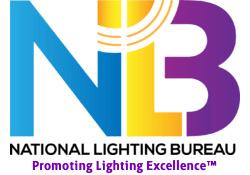03.31.15 Today’s LED Linear Lighting Solutions Should Always Be Matched with Total Light Quality
[fusion_builder_container hundred_percent=”yes” equal_height_columns=”no” hide_on_mobile=”small-visibility,medium-visibility,large-visibility” background_position=”center center” background_repeat=”no-repeat” fade=”no” background_parallax=”none” enable_mobile=”no” parallax_speed=”0.3″ video_aspect_ratio=”16:9″ video_loop=”yes” video_mute=”yes” overlay_opacity=”0.5″ border_style=”solid” padding_top=”100px” padding_bottom=”100px”][fusion_builder_row][fusion_builder_column type=”1_1″ layout=”5_6″ spacing=”yes” center_content=”no” hover_type=”none” link=”” min_height=”none” hide_on_mobile=”small-visibility,medium-visibility,large-visibility” class=”” id=”” background_color=”” background_image=”” background_position=”left top” undefined=”” background_repeat=”no-repeat” border_size=”0″ border_color=”” border_style=”solid” border_position=”all” padding=”0px 0px 0px 0px” margin_top=”” margin_bottom=”” animation_type=”” animation_direction=”left” animation_speed=”0.3″ animation_offset=”” last=”no”][fusion_text]
Professional lighting specifiers know that today’s LED light sources have changed, and are changing, ways professional lighting specifiers think of and now use lighting itself for virtually any outdoor or interior environment and application. Exceptional energy savings is a very good thing for everyone, as long as it also embodies exceptional light quality to optimize the entire equation. All professional lighting specifiers, buyers and installers now have seen the multiple little bright-white LED light sources in rectangular and square luminaire products; but still too often with wasteful, even harmful glare not conducive to excellent light quality for the energy and maintenance saved.
Luminaire manufacturers now create linear LED luminaires that emulate linear fluorescent lamps by employing strips of multiple LEDs. A typical two-inch strip of LEDs can now contain up to 96 LEDs in a single row, spreading light over a longer area and reducing glare that many units produce. Multiple LED light strips can now be used in 4- to 8-foot linear LED luminaires, further reducing glare.
Having a range of specific optics for given product lines further reduces “exit luminance” (labeled as glare), improving overall light quality. Optics can be integral parts of LED strips, with an added optic to each LED on a strip, or on a luminaire lens, reducing exit luminance even more for which the customer is paying. Improved light quality will produce more visually useable light, but will also normally reduce a lighting level slightly. Since human eyes can adapt to a given lighting level better than they cope with glare, a 15% to 20% lower LED light output is less noticeable by an end client, in a given room scene, or interior space, an outdoor area or landscape application.
The more glare present in any given lighting scene, indoors or out, the more light output is needed to overcome that glare. So, such light is not as energy efficient as it could be if glare were minimized “up front” for better lighting comfort, greater inside work productivity , and safer outside operating environments.
Light-source color for any LED lighting system is also highly important with products and technology in today’s market. The higher the Kelvin temperature, the higher the blue spectrum of light content. In lower-light situations — such as in windowless offices, stores, warehouses, and at night — human eyes become more sensitive to blue light. Those sources then appear to be brighter, which can add to the perceived glare factor.
Too much of any of the three basic wavelengths (Red, Green, and Blue; “RGB”) can distort what an LED lighting system illuminates, and at what people are looking.
Under LED sources of 5000K and higher, skin looks ashen and abnormal. Other colored objects will not show up in their normal color; wrong for trying to identify people, accurately communicating clothing colors or objects. Object recognition, and its accurate identification, are worlds apart. Under 5000K and higher linear LED-illuminated light sources, a “red” objects (cars, trucks, motorcycles) can appear as maroon. Police, for example, would not see a “red” vehicle, if it was reported as maroon.
While today’s rapidly advancing LED luminaires solve more problems than ever before, in their still young history of development to date, such lighting systems need to have 1.) high white-light color rendering indoors or out; 2.) uniform light distribution; and 3.) low exit luminance (source glare), which also provides less reflected glare, in any visual application.
One of the most important LED (and other) lighting applications is when driving on wet streets and even parking lots. Glare reflected from wet vehicles and their windshields, including our own, increase as the light-source-intensity increases, causing lower visual effectiveness which can be hazardous, even dangerous.
Professional lighting specifiers and the light-source/light-fixture manufacturers they use, should be encouraged to use a Total Lighting Quality Metric (TQLM) based on these last three factors in the foregoing paragraph.
Sophisticated professional lighting design is now more widely available than in any past decade can insure maximum visual effectiveness, lowest glare, highest color rendition and lowest energy use. Employee productivity can increase, with higher energy savings from light-source or luminaire replacements. This is uniformly good news, and good illumination planning, for new or retrofit projects of any kind.
About the author: Larry Leetzow, IES, IDA, CIE Member for Life, is president of the World Institute of Lighting and Development Corporation, Bradenton, FL. He is a Board member of the National Lighting Bureau and an active IES committee member. He has served the lighting industry for 50-plus years as a lighting consultant, lighting-systems designer, and luminaire designer.
[/fusion_text][/fusion_builder_column][/fusion_builder_row][/fusion_builder_container]
Here goes your text ... Select any part of your text to access the formatting toolbar.